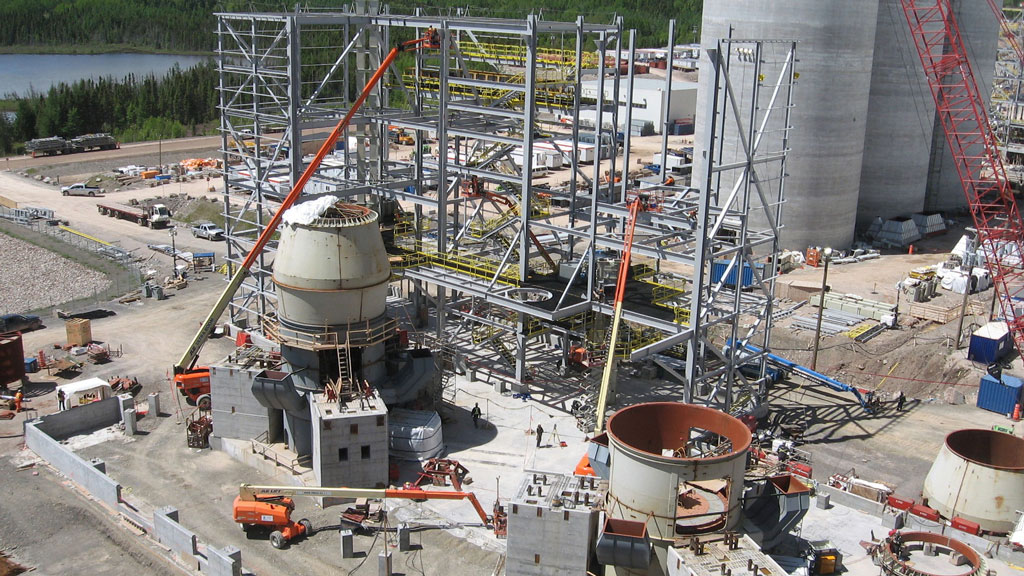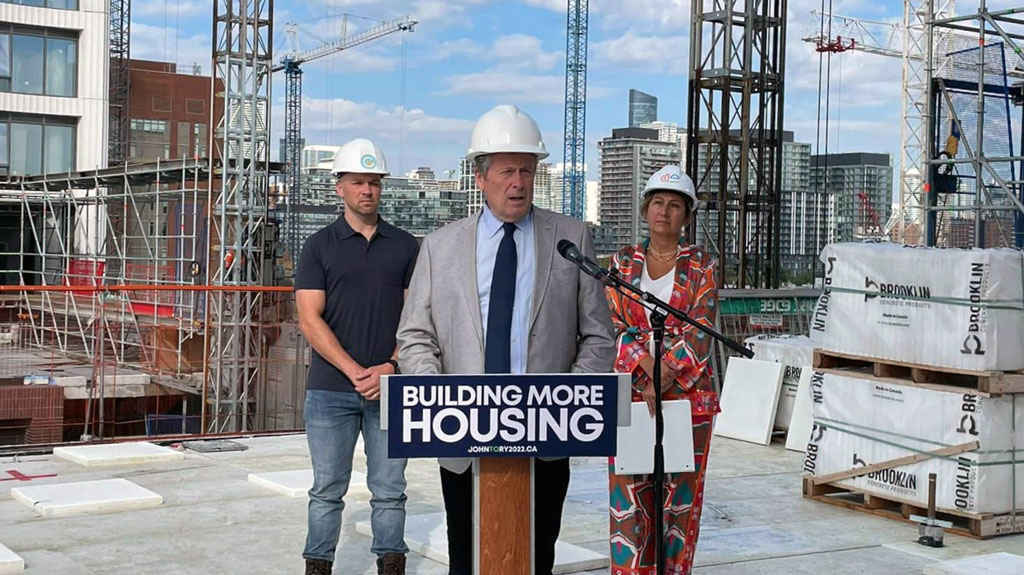The issues impacting the construction industry were, in many ways, intrinsically linked in 2022.
Where one challenge presented itself, a ripple effect quickly followed.
There were supply chain issues, with escalating costs and material shortages; a severe lack of skilled trades to carry out needed projects; and labour strife impacting manpower on jobsites.
All of these elements thrown together created a perfect storm for the industry as you’ll read in our top issues breakdown.
Supply chain issues at the heart of almost every construction matter
Global factors like the war in Ukraine, the pandemic and extreme weather events gravely impacted the construction industry supply chain.
But domestic matters are causing just as much disruption.
Throughout 2022 the Daily Commercial News (DCN) covered numerous stories with warnings from economists, developers and other industry experts about the escalating cost of doing business.
The ramifications were widespread, with many developers questioning whether to proceed with projects at all.
During one panel discussion, Marlon Bray, senior director of cost consulting with Altus Group, said hard costs have been trending upward for the past five years but in the past year they’ve creeped up to 15 per cent per annum.
“Everything’s come together this year in terms of what could go wrong in the market to create this environment where construction costs are literally just totally out of control almost,” said Bray. “At what point do revenues stop increasing and we still have projects go ahead?”

In addition to material cost increases on almost every level, were severe issues impacting the concrete sector in Ontario.
In June, the DCN reported a March blockade of aggregate sites by haulers led to delays in production. Problems were further exacerbated when three of Ontario’s five concrete plants went offline for repairs and also, labour shortages including a lack of truckers, to get the product to jobsites.
In September, it was revealed the City of Toronto cancelled three road resurfacing tenders that equated to a deferral of 20 per cent of the city’s local road rehabilitation budget for the year, amounting to $41 million.
The impacts seemed endless across the spectrum and the uncertainty remains.
Perhaps Chris Gower, COO for buildings at PCL Construction, summed it up best when he said, “the strain is everywhere.”
For a full look at our supply chain coverage click here.
What is the future of housing in Ontario?
1.5 million homes built in 10 years.
It’s a sentence that’s been stated repeatedly by the Ontario government.
Tacking on to that are several initiatives, political promises and pieces of legislation that are being both praised and criticized depending on where you sit on the housing agenda.
Earlier this year, the Housing Affordability Task Force released a report that called for sweeping changes to the province’s planning, zoning, permitting and appeals system to enable more homes to be built faster.

Stemming from that were two major pieces of legislation that caused quite a stir: the Strong Mayors, Building Homes Act and Bill 23, More Homes Built Faster Act.
The Strong Mayors act essentially gives the mayors of Ontario’s two largest cities, Toronto and Ottawa, more powers to expedite homebuilding, giving them veto powers over bylaws.
The move received almost universal praise from industry stakeholders, but it does have its share of critics who fear it will create a host of problems.
Bill 23 also made waves in 2022 with conservation authorities and cities voicing their concerns quite loudly.
One of the most controversial aspects of Bill 23 is freezing, reducing and exempting fees developers pay to build affordable housing.
The Association of Municipalities of Ontario said the legislation could leave communities short $5 billion. For those in the residential construction sector, however, this bill is a game-changer.
“These hefty fees are out of control and can result in a project being shelved. Municipalities have become dependent on them, and an alternative must be found,” said Residential Construction Council of Ontario (RESCON) president Richard Lyall, in a statement.
Will immigration reform, skilled trades funding be enough to quell the labour shortage?
The looming labour shortage is no more. It’s upon us.
Throughout 2022, several initiatives were unveiled in Ontario to try and attract more people to the workforce, but the monumental task of filling the void still remains.
In January, it was announced Skilled Trades Ontario (STO) had officially launched. STO was created by the Building Opportunities in the Skilled Trades Act, 2021 to replace the Ontario College of Trades as the Crown agency designated to regulate and promote the skilled trades in the province.
Minister of Labour Monte McNaughton said STO would mesh with the government’s $1.5-billion Skilled Trades Strategy, promote and market the trades and develop new training and curriculum standards.

McNaughton continued to rollout various trade funding and training announcements across the province throughout the year.
One area that was fervently discussed in 2022 was the idea immigration reform could be one solution to the shortage.
The Canadian Construction Association (CCA) took the issue to Parliament Hill during its recent Hill Day in November. CCA president Mary Van Buren pointed out the sector is currently struggling to fill over 81,000 jobs nationwide.
McNaughton also pushed the agenda on the provincial front with the support of numerous industry stakeholders.
Although details are scarce, it was announced in November McNaughton worked out a deal with the federal government to give the province more control over “economic immigration.”
Previously he was pushing for the allotment under the Ontario Immigrant Nominee Program to be doubled from 9,000 to 18,000. The specific number the feds agreed to has not been released.
2022 labour strife featured concrete woes, hauler protests and worker strikes
Collective bargaining negotiations were in full swing this past spring and with it came labour disruptions.
According to the Ontario Construction Secretariat, as of September, 24 of 25 trades had ratified three-year collective agreements. Wages rose between $5 and $9 per hour in the three-year packages, and there were eight tentative agreements rejected by union members.
All in, there were five strikes in ICI totalling 60 days: by the carpenters, demolition workers, glaziers, operating engineers and painters.
The residential side also saw major labour disruptions with thousands going on strike in the sector.

1/3
DON WALL — Some 1,500 members of the Ontario Dump Truck Association launched a job action in the GTA on March 21 in support of better rates and working conditions. Pictured, drivers and operators gathered at the Khalsa Darbar temple on Dixie Road in Mississauga.
2/3
OPSEU FACEBOOK — Approximately 170 Technical Standards and Safety Authority inspectors, members of OPSEU/SEFPO Local 546, hit the bricks July 21 to press first contract demands. They were on strike until October.
3/3
TORONTO CARPENTERS UNION LOCAL 27 TWITTER — In 2022 there were five strikes in ICI totalling 60 days: by the carpenters, demolition workers, glaziers, operating engineers and painters. Pictured are the members of the Carpenters’ Union on strike.
In a more unique turn of events, March 2022 saw multiple projects threatened by protests at quarries by aggregate haulers who parked their trucks looking for a major increase in rates.
The work action started March 14 but by March 25 a deal had been reached that gave the aggregate haulers a large retroactive rate increase.
But the trucking disruptions didn’t stop there.
Approximately 1,500 members of the Ontario Dump Truck Association stopped work for two months from March to May in hopes of obtaining better rates and working conditions, they stated.
Then, in late August, the same time as the Canadian National exhibition opened, 170 technical safety inspectors who work for the Technical Standards and Safety Authority went on strike. That job action lasted until October, when the unionized inspectors ratified their first collective agreement.
The front page 2022: when news broke, the DCN raced to deliver the details











Recent Comments
comments for this post are closed